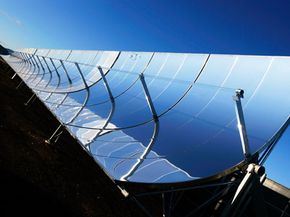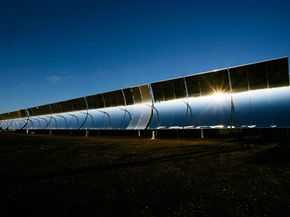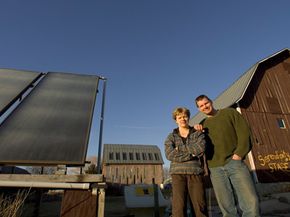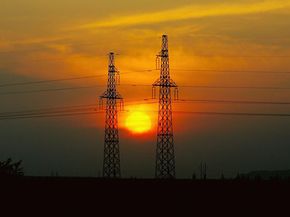Most of us don't think much about where our electricity comes from, only that it's available and plentiful. Electricity generated by burning fossil fuels such as coal, oil and natural gas, emits carbon dioxide, nitrogen oxides and sulfur oxides -- gases scientists believe contribute to climate change. Solar thermal (heat) energy is a carbon-free, renewable alternative to the power we generate with fossil fuels like coal and gas. This isn't a thing of the future, either. Between 1984 and 1991, the United States built nine such plants in California's Mojave Desert, and today they continue to provide a combined capacity of 354 megawatts annually, power used in 500,000 Californian homes [source: Hutchinson]. Reliable power, at that. In 2008 when six days of peak demand buckled the power grid and brought electricity outages in California, those solar thermal plants continued to produce at 110 percent capacity [source: Kanellos].
Wondering where the technology's been since then? In the 1990s when prices of natural gas dropped, so did interest in solar thermal power. Today, though, the technology is poised for a comeback. It's estimated by the U.S. National Renewable Energy Laboratories that solar thermal power could provide hundreds of gigawatts of electricity, equal to more than 10 percent of demand in the United States [source: LaMonica].
Advertisement
Shake the image of solar panels from your head -- that kind of demand is going to require power plants. There are two main ways of generating energy from the sun. Photovoltaic (PV) and concentrating solar thermal (CST), also known as concentrating solar power (CSP) technologies.
PV converts sunlight directly into electricity. These solar cells are usually found powering devices such as watches, sunglasses and backpacks, as well as providing power in remote areas.
Solar thermal technology is large-scale by comparison. One big difference from PV is that solar thermal power plants generate electricity indirectly. Heat from the sun's rays is collected and used to heat a fluid. The steam produced from the heated fluid powers a generator that produces electricity. It's similar to the way fossil fuel-burning power plants work except the steam is produced by the collected heat rather than from the combustion of fossil fuels.
Advertisement



